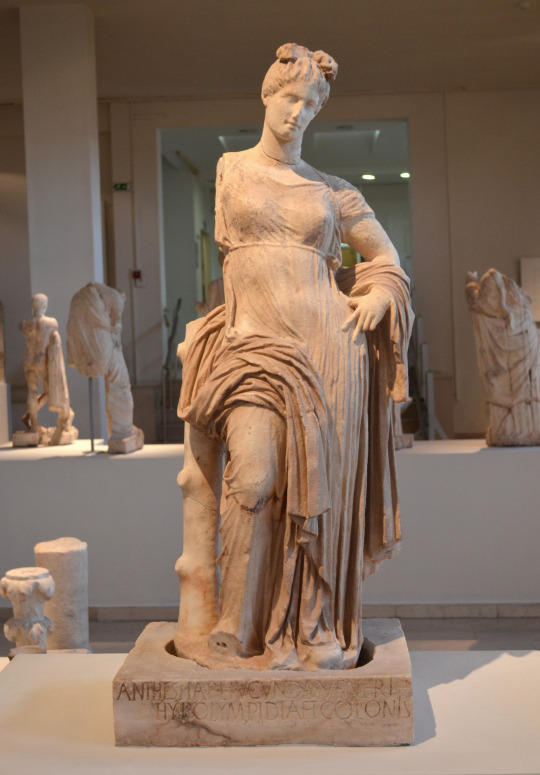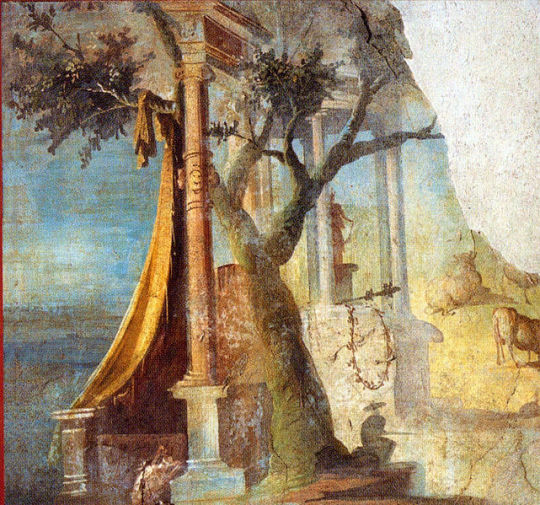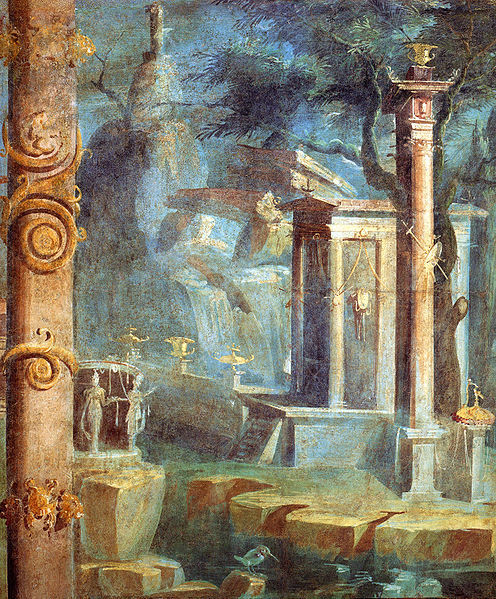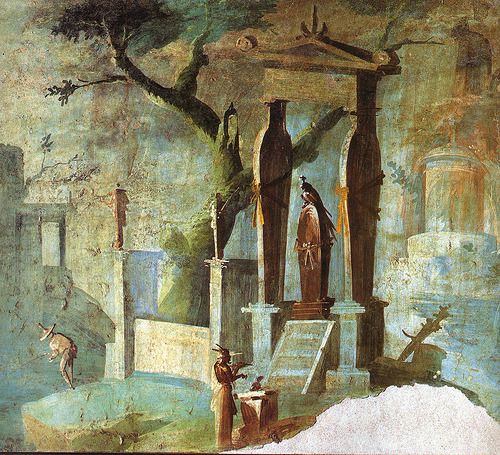
Archaeological Museum of Dion:
Statuettes of Harpocrates, the companion of Isis. (2nd century A.D). From the sanctuary of Isis.
A replica of the left statuette, at the location it was found, at the sanctuary of Isis.


Archaeological Museum of Dion:
Statuettes of Harpocrates, the companion of Isis. (2nd century A.D). From the sanctuary of Isis.
A replica of the left statuette, at the location it was found, at the sanctuary of Isis.


Archaeological Museum of Dion:
Statue to Isis Tyche, and other votives, including one devoted to Isis Lochia (protector of women who gave birth). From the sanctuary of Isis.

Archaeological Museum of Dion:
A votive relief with a depiction of Isis from the sanctuary of Isis, embedded on the facade of the temple.

Archaeological Site of Dion:
From the sanctuary of Isis, a view to the statue(replica) of Aphrodite Hypolympidia*. The actual statue is housed in the museum. I can’t read the inscription very well, but it seems the first word is the name Anthestia, she and her daughter were major sponsors of the sanctuary.
Aphrodite of the foot of the mountain (Olympus)

Archaeological Site of Dion:
More pictures from the sanctuary of Isis. The visitor actually enters it from the sides.
Archaeological Site of Dion:
Some more pictures from the sanctuary of Isis. The temple of Demeter also has many votive statues. Judging from the votive statues in other sanctuaries, these could be in the likeness of adorants, priestesses, family members of people who were helped or healed by the sanctuary, and sponsors. The last statue depicts Isis Tyche, in the same room, a sacred spring was also housed.
Artemis was previously worshipped at the sanctuary and towards its destruction in the 4th century A.D, it seems that Christ and Isis were worshiped together there. The sanctuary was destroyed by a series of earthquakes and floods. This series of natural disasters might have also destroyed Dion’s oldest christian basilica.

Archaeological Site of Dion:
A votive statue of Ιοulia Phrougiane Alexandra from the sanctuary of Isis. (All the statues on the site are replicas placed where the originals stood, while the originals are either in the museum or in storage).
The excavation of the sanctuary of Isis proved a particularly difficult task since it was under a river originally. The river bed had to be moved for the excavation to be completed, but subterranean springs still flood the site, demanding a complicated and expensive drainage system for the study of the site to continue. In the antiquity a spring was actually housed in one of the shrines, and the water of another passed in a basin under the statue of Aphrodite Ypolympidia.
To be quite honest most people do come to see the statues submerged in water. At the shrine of the egyptian gods in Brexiza (Marathon, Attica), the sanctuary was actually built on an isle in a marsh with imported birds and egyptian flora so as to resemble the nilotic landscape, Perhaps the choice of a marsh-like environment here was no accident either, and the flooding was controlled to create a similar setting.
These murals from the Archaeological Museum of Naples (Italy), found at the Temple of Isis in Pompeii, depict islands with small shrines and fishermen. The multiple shrine system can be found at Dion too, with the sanctuary of Demeter- close to the sanctuary of Isis- as it would have been in the Classical period.


